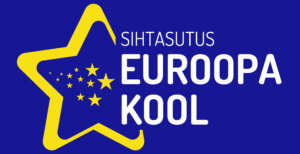KiVa antibullying programme
In order to prevent bullying and foster positive social relationships among students, TES is implementing the KiVa programme in Primary and Secondary. KiVa was developed by the University of Turku in Finland and it has spread to more than 20 countries around the world. TES is the 6th European School to adopt the programme.
KiVa programme
- is one of the most systematic antibullying programmes in the world
- involves the whole school community – students, teachers and parents
- includes instructions and activities for both prevention and intervention
- teaches students to recognise bullying and to respond in a caring and responsible way
Bullying is not tolerated in our school. We all work together to prevent bullying and to successfully tackle any bullying cases. KiVa is not a one-year project but a permanent part of the school life.
- Liina Junolaine, Educational Advisor – KiVa Team Coordinator
- Marion Lelong-Perini, Primary Class Teacher
- Vittoriano Renò, Primary and Secondary Teacher
- Guilherme Struecker, Primary and Secondary Teacher
- Regular KiVa lessons in all grades P1 to S4
- KiVa Assemblies to foster positive social relationships
- KiVa Welcomes
- KiVa Breakfasts
- KiVa Sports
- KiVa Parents Information evenings
- Odd Socks Day in partnership with Student Council
- KiVa lesson visits by the KiVa team in Upper Secondary
- Student-made KiVa posters to share positive messages around the school building
- KiVa reflective vests are worn by all teachers on duty
- All alleged bullying cases are screened and tackled by a trained KiVa team
- KiVa training and handbooks offered to parents
- and many more to come…
The KiVa Calendar for the 2023-2024 school year will be published soon.
Find out some basic information about bullying (What is bullying? What are the different forms of bullying? What causes bullying? How to recognise a bullied student?) and several anti-bullying measures to implement at school and at home in the KIVA PARENTS’ GUIDE.
1- Reporting
Students, parents or staff members who become aware of a possible bullying case inform the students’ class teacher or any member of the school’s KiVa team.
2- Screening
In order to determe if the case qualifies as bullying, a screening form is filled in by the class teacher and a KiVa team member. If necessary, more staff members are contacted.
3- Discussion with the alleged victim
The victim is interviewed by at least two of the KiVa team members about the circumstances of the case and reassured that the teachers and the KiVa team will take steps to improve the situation.
4- Discussion with the bully
Deriving from the information given by the victim, the students involved in bullying are interviewed individually. The students are given a chance to come up with ways to change their behavior and the agreements are written down.
5- Notifying the parents
Parents of all parties are notified of the proceedings, contacts are given for additional questions and concerns
6- Recruiting supporters
Class teacher chooses students to support the victim
7- Follow-up discussions
Follow-up discussions with the victim and the bullies take place one week later.
8- Updating the parents
Parents are updated on the content of the discussions.
9- Continuous monitoring
Class teacher, subject teachers and KiVa team members will continue to monitor the relationships between students involved. Additional follow-up meetings are organised, if necessary
- Stay calm. Think how you will address the topic. Overreacting and underreacting are both dangerous.
- Talk to your child. Reflect on what you have noticed. Tell the child that you are worried and you want to help and support them.
- Listen to your child. Do not minimise your child’s worry or offer random solutions.
- Understand his/her fear. Only the child can assess how safe school is for him/her.
- Keep in mind that school cannot be responsible for everything and teachers might not notice or know everything.
- Discuss different ways of how to stop bullying.
- As a parent you cannot insist your child be popular in class but you can expect him/her to be treated with respect.
- You have a right, or even a duty, to inform the school so that you can find the solution all together.
- Bullying is not a normal part of a child’s development and should not be tolerated at all.
- Stay calm. Think how you will address the topic. Overreacting and underreacting are both dangerous.
- Talk to your child and listen to him/her. Try to understand how he/she feels and understands the situation.
- Give the child a clear message – bullying needs to stop. Limits can be delivered in the form of criticism and shaming, or they can be communicated in a firm but respectful way. You disapprove of the action, but not your child.
- Discuss the ways of how to stop bullying and solve the situation. Let the child offer his/her own solutions.
- Contact the school and talk about your observations. Ask for their recommendations.
- Take time to think:
- does your child have enough possibilities to satisfy his/her need for achievement and recognition?
- does he/she have enough attention?
- how is his/her self-esteem? Help him/her find his/her strengths. Notice when doing something positive.
- Think about you as a role model – how you communicate and solve problems. Understand that actions speak louder than words.
Remember that a bullying child is not a bad child and you are not a bad parent. A bully needs help in order to understand the influence of his/her behaviour.
- KiVa Programme International Website: www.kivaprogram.net
- KiVa in Estonia – Kiusamisvaba Kool: kiusamisvaba.ee (in Estonian and Russian only)
If you have any questions regarding the programme and how our school tackles bullying cases, please contact our KiVa Team Coordinator Liina Junolaine: liina.junolaine@est.edu.ee / Room A138



